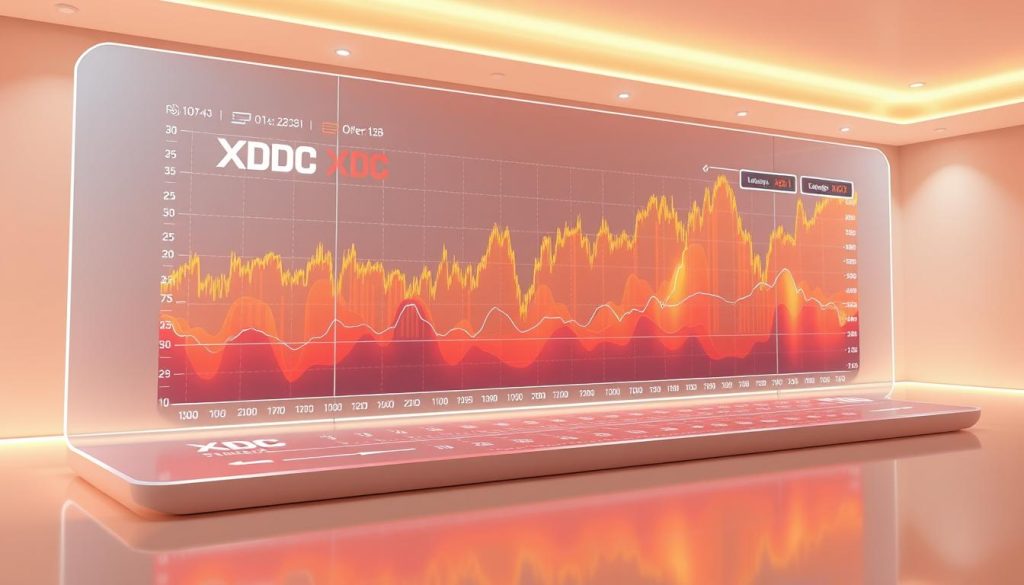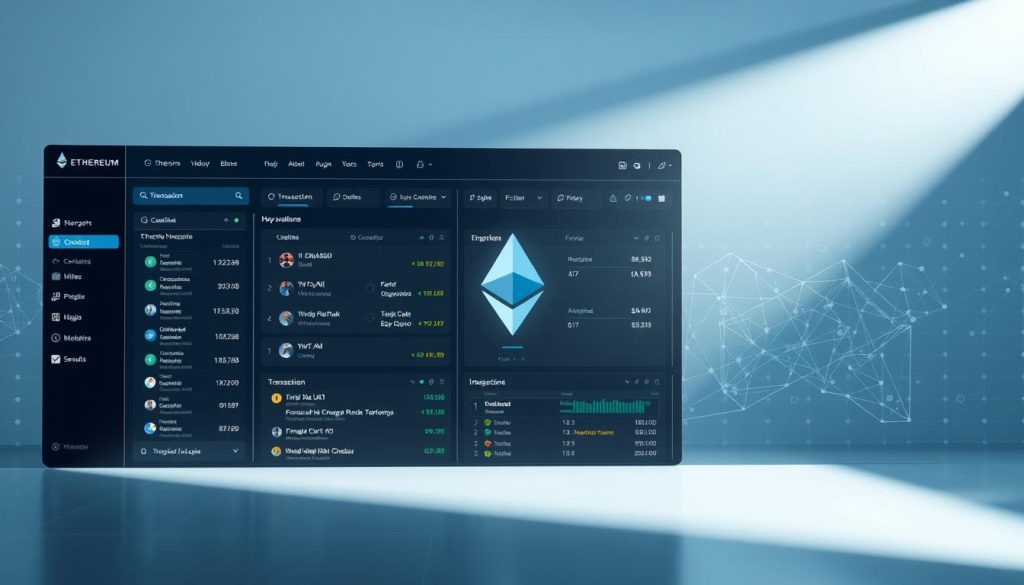Did you know MicroStrategy holds 174,530 BTC worth $9 billion? They’re one of 20+ public companies stacking Bitcoin. This shift changes how we view corporate finance.
I’ve watched this space evolve for years. What began as hobbyists with GPU rigs has transformed dramatically. The biggest bitcoin mining companies are now strategic financial players reshaping the crypto world.
These top miners blend industrial-scale operations with smart treasury management. They’re influencing market prices and driving technological innovation across the industry.
To understand cryptocurrency’s future, we must grasp these giants’ roles. Let’s explore the major players and their motivations.
Key Takeaways
- Over 20 major public corporations now hold Bitcoin in their corporate treasuries
- MicroStrategy leads with 174,530 BTC valued at approximately $9 billion
- Modern crypto miners operate as complex financial entities, not just transaction processors
- These corporations significantly influence Bitcoin market prices and technological development
- The industry has evolved from basement hobbyists to billion-dollar industrial operations
- Understanding major players is essential for grasping cryptocurrency’s future direction
Overview of the Bitcoin Mining Industry
Bitcoin mining has transformed dramatically since its inception. It evolved from home-based hobbyists to a sophisticated global enterprise worth about $1 trillion. The scale of modern operations is astounding compared to the early days.
Today’s landscape involves major bitcoin mining firms operating massive data centers. These centers use more electricity than entire countries. They’re not just tech companies anymore, but financial powerhouses navigating complex challenges.
What Bitcoin Mining Actually Means
Bitcoin mining validates transactions and secures the entire Bitcoin network. It’s like a huge, distributed accounting system where computers solve complex math puzzles. Miners add new transaction blocks to the blockchain when they solve these puzzles.
In return, miners receive newly created Bitcoin as a reward. The real value isn’t just in earning Bitcoin—it’s in maintaining network security and decentralization.
The process requires specialized hardware called ASIC miners. These machines perform trillions of calculations per second. Only industrial-scale operations can compete effectively in today’s market.
Why Bitcoin Mining Matters More Than You Think
Bitcoin mining is the backbone of the entire cryptocurrency ecosystem. Without miners, there would be no Bitcoin network. They’re literally securing billions of dollars in digital assets.
Mining operations validate every transaction and prevent double-spending. They also maintain the network’s resistance to attacks. When leading bitcoin mining operations shut down, it can affect the entire network’s stability.
Mining is the foundation that makes Bitcoin trustworthy without requiring a central authority.
This decentralized security model has proven remarkably resilient. The network adapts and continues operating even when major mining regions face regulatory crackdowns.
Current Market Trends and Growth Patterns
The mining industry has undergone massive consolidation over the past few years. Smaller operations have been acquired or forced out, leaving the field to well-funded corporations.
Key trends I’ve observed include:
- Industrial-scale efficiency – Modern facilities process thousands of transactions per second
- Renewable energy adoption – Companies are shifting toward sustainable power sources
- Strategic Bitcoin accumulation – Miners are holding coins instead of selling immediately
- Geographic diversification – Operations are spreading across multiple countries for regulatory safety
The financial stakes have never been higher for major bitcoin mining firms. Bitcoin’s price movements can make or break quarterly earnings. These firms have become sophisticated financial strategists.
Market volatility has forced companies to become more resilient and adaptable. The survivors have mastered both technical and financial aspects of this challenging industry.
Top Bitcoin Mining Companies in 2023
Three mining giants dominate the 2023 Bitcoin mining sector. Each pursues different strategic approaches. These large-scale bitcoin mining companies have adapted to market pressures while maintaining their competitive edge.
Industry leaders thrive by developing unique business models. They set themselves apart from smaller competitors. Each company represents a different philosophy toward Bitcoin mining.
Some focus on operational efficiency, others integrate hardware manufacturing. Several have adopted treasury strategies that blur traditional mining boundaries.
Bitmain Technologies
Bitmain Technologies is the hardware kingmaker of Bitcoin mining. Their influence extends beyond simple mining operations. They supply the tools powering the entire industry.
Their ASIC miners are everywhere. Their impact on mining difficulty adjustments has become increasingly substantial. Bitmain’s vertical integration strategy sets them apart from other prominent bitcoin mining enterprises.
They don’t just mine Bitcoin; they manufacture the hardware. This dual approach creates a competitive moat. Their Antminer series has become the industry standard.
Riot Blockchain
Riot Blockchain represents the pure-play mining approach. Their strategy focuses on large-scale bitcoin mining companies operational efficiency. They also prioritize strategic facility placement.
The Whinstone facility in Texas exemplifies their approach to industrial-scale mining. It’s one of the largest Bitcoin mining facilities in North America. Their focus on renewable energy positions them well for future regulations.
Riot’s hash rate has grown consistently, reaching over 9 EH/s by late 2023. This growth shows their ability to scale operations while maintaining profitability.
Marathon Digital Holdings
Marathon Digital Holdings uses a hybrid strategy beyond traditional mining. They’re adopting a “Bitcoin Flywheel” approach. This involves mining Bitcoin and holding significant reserves on their balance sheet.
Their approach mirrors companies like MicroStrategy, making Bitcoin holdings a core business model. Marathon has accumulated substantial Bitcoin reserves while expanding mining capacity. This dual strategy provides multiple revenue streams.
The company focuses on sustainable mining practices. Their partnership with renewable energy providers aligns mining with environmental concerns. They maintain profitability while being eco-friendly.
| Company | Primary Strategy | Hash Rate (EH/s) | Key Advantage | Market Focus |
|---|---|---|---|---|
| Bitmain Technologies | Hardware Manufacturing + Mining | 12.5 | Vertical Integration | Global Hardware Supply |
| Riot Blockchain | Pure-Play Mining | 9.2 | Operational Efficiency | North American Operations |
| Marathon Digital Holdings | Mining + Bitcoin Treasury | 7.8 | Hybrid Business Model | Sustainable Mining |
The Bitcoin mining industry has matured, as shown by these companies. Each succeeds by focusing on different aspects of the mining ecosystem. Bitmain dominates through hardware control, Riot excels in operational efficiency.
Marathon innovates with treasury strategies. Each company has adapted differently to the 2024 halving event. Some prioritized hash rate growth, others focused on cost reduction.
Several diversified their balance sheets with Bitcoin holdings. These strategic differences will likely determine future industry leaders. The Bitcoin mining landscape continues to evolve.
Leading Technology Used by Mining Companies
Bitcoin mining operations rely on cutting-edge technology to stay competitive. The industry has evolved rapidly, with efficiency now a key battleground. Top companies compete on watts per terahash and operational efficiency.
Technology has become the ultimate differentiator in this field. Companies unable to keep up with hardware innovations fall behind. Even a 5% efficiency boost can mean the difference between profit and loss.
ASIC Miners Explained
Application-Specific Integrated Circuits (ASICs) have transformed Bitcoin mining. These specialized processors designed for one purpose only solve Bitcoin’s cryptographic puzzles efficiently. Modern miners perform trillions of calculations per second while using little power.
The latest ASIC technology represents years of engineering refinement. Companies like Bitmain and MicroBT lead the way in this field.
Here’s what makes current ASIC miners so impressive:
- Hash rate efficiency: Modern units deliver 100+ terahashes per second
- Power optimization: Advanced chips consume 20-30 watts per terahash
- Heat management: Improved cooling systems extend hardware lifespan
- Operational stability: Built for 24/7 continuous operation
The major bitcoin mining corporations know that buying the latest ASIC miners isn’t enough. They must understand power curves, thermal management, and maintenance schedules to maximize their investment.
Energy Consumption and Efficiency
Energy efficiency is now crucial in Bitcoin mining. Companies have shifted from focusing on hash rate to performance per watt. This change occurred because electricity often makes up 60-80% of mining expenses.
Newer ASIC miners can be 10-20% more efficient than previous generations. In an industry with thin margins, this improvement is game-changing.
The energy consumption challenge has forced these companies to become experts in power management, renewable energy integration, and even heat recovery systems.
Mining operations have become creative with energy usage. Some facilities now use their waste heat for:
- Agricultural projects: Heating greenhouses and drying crops
- District heating systems: Warming residential and commercial buildings
- Industrial processes: Supporting manufacturing operations
Rising energy costs and reduced rewards have hit companies like CleanSpark hard. They’ve had to focus on efficiency improvements to maintain profitability.
Advancements in Mining Hardware
Hardware innovation in Bitcoin mining continues at a rapid pace. We’re seeing fundamental advances in chip architecture, cooling systems, and operational management. Modern systems focus on performance per watt, heat management, and operational longevity.
Current hardware innovations include:
- Advanced chip geometries: Moving to smaller nanometer processes for better efficiency
- Immersion cooling systems: Submerging miners in dielectric fluids for superior heat dissipation
- Intelligent power management: Dynamic voltage and frequency scaling based on operating conditions
- Predictive maintenance: AI-driven systems that anticipate hardware failures
The key players in bitcoin mining industry know that hardware advancement isn’t just about buying new equipment. It’s about integrating these technologies into comprehensive operational strategies for maximum efficiency.
Companies that quickly adapt to new technologies often outperform their competitors. They efficiently deploy new hardware while maintaining operational stability.
The technology race in mining shows no signs of slowing down. Pressure to innovate has intensified as competition grows and energy costs rise globally.
Key Statistics on Bitcoin Mining
Bitcoin mining data reveals a sophisticated, capital-intensive industry. Major players operate on a staggering scale. The numbers show more than just profits.
The biggest names in bitcoin mining have changed dramatically. Market shifts happen fast. Price changes affect every mining operation instantly.
Current Bitcoin Mining Hash Rate
The global Bitcoin hash rate has reached incredible levels. It’s now at about 450 exahashes per second. This shows a huge increase in network computing power.
The hash rate distribution is fascinating. Large operations contribute several exahashes each. Few entities now control much of the network’s security.
Hash rate changes match Bitcoin’s price moves. In May 2025, Bitcoin dropped from $112,000 to $104,000. Miners quickly adjusted their operations.
Profitability Trends in Mining
Mining profits are hard to predict. Bitcoin’s price and mining costs create a delicate balance. Top bitcoin mining establishments must navigate this carefully.
Profit metrics vary across operations. Efficient miners with cheap electricity stay profitable during price drops. Less efficient ones struggle with price changes.
| Mining Efficiency Level | Break-even Bitcoin Price | Profit Margin at $105,000 | Hash Rate Contribution |
|---|---|---|---|
| High Efficiency Operations | $28,000 | 73% | 45% |
| Medium Efficiency Operations | $42,000 | 60% | 35% |
| Lower Efficiency Operations | $58,000 | 45% | 20% |
The May 2025 price drop affected these margins. Mining companies changed strategies quickly. Some cut back operations. Others focused on improving efficiency.
Energy costs are key for profits. Operations with costs under $0.04 per kWh do well. Those paying over $0.08 per kWh struggle when prices change.
Comparison of Market Capitalization
Mining company market caps show interesting valuation methods. Some are based on Bitcoin holdings. Others depend on how efficient the operation is.
Market caps vary widely and don’t always match hash rate contributions. Investor views on growth and sustainability affect these differences.
Mining stocks react strongly to Bitcoin price changes. In May 2025, some mining stocks moved 15-20% daily. Bitcoin itself only moved 7%.
The biggest mining operations are worth over $10 billion. Mid-size ones range from $1-5 billion. Smaller public miners often trade below $500 million.
These stats show a mature but volatile industry. Major players control more hash rate. Profits depend on efficiency and strategy during price changes.
Environmental Impact of Bitcoin Mining
The carbon footprint debate has pushed biggest bitcoin mining companies to rethink their approach. The industry now focuses on more than just computational power. Environmental responsibility has become essential for survival in this field.
Mining facilities worldwide show both concerning and hopeful energy consumption trends. Bitcoin mining uses significant energy, but the narrative is changing rapidly.
Carbon Footprint Analysis
The carbon footprint of Bitcoin mining depends on energy sources used. Location matters more than most people realize. Iceland’s geothermal-powered mining differs greatly from coal-powered operations elsewhere.
Bitcoin mining uses about 110-150 TWh annually, similar to Argentina’s energy consumption. However, the energy mix used by top crypto miners has changed dramatically.
The Bitcoin Mining Council reports sustainable energy usage in mining reached 58.4% by late 2023. This is a big jump from the estimated 25% a few years ago.
| Energy Source | 2021 Usage (%) | 2023 Usage (%) | Environmental Impact |
|---|---|---|---|
| Renewable Energy | 25% | 58.4% | Low Carbon Footprint |
| Natural Gas | 30% | 22% | Medium Carbon Footprint |
| Coal | 35% | 15% | High Carbon Footprint |
| Nuclear | 10% | 4.6% | Low Carbon Footprint |
Sustainable Mining Practices
The transformation in sustainable mining practices has been remarkable. Biggest bitcoin mining companies are now actively going green. Marathon Digital Holdings aims to be carbon neutral by 2030.
Some mining facilities now run entirely on renewable energy. They use solar panels in Texas and hydroelectric power in Washington State. Some companies even buy carbon credits to offset remaining emissions.
Heat recovery systems are a fascinating development. Some facilities use excess heat to warm greenhouses, buildings, and pools.
Profitable bitcoin mining is now linked to environmental efficiency. Sustainable practices attract more investment and face fewer regulatory hurdles.
Innovations in Green Mining Technologies
Immersion cooling systems are changing how mining hardware operates. These systems can reduce energy use by 45% compared to air cooling.
New ASIC miners are more energy-efficient than ever. They achieve higher hash rates while using less power per terahash.
Solar-powered mining farms now include battery storage. This allows operations to continue at night or on cloudy days.
Top crypto miners are testing innovative cooling solutions. Geothermal, liquid cooling, and underwater mining can cut cooling costs by 30-50%.
The future of Bitcoin mining will be determined not by who can consume the most energy, but by who can mine most efficiently with the least environmental impact.
Some facilities are experimenting with carbon capture technology. These systems aim to convert CO2 emissions into useful products or store them underground.
Environmental sustainability may become the main competitive advantage in Bitcoin mining soon. Companies mastering clean mining will likely dominate the industry.
The move towards sustainable mining isn’t just about being green. It’s about long-term profits and survival in a more regulated industry.
Financial Performance of Major Companies
Tracking numbers behind leading bitcoin mining operations revealed eye-opening industry patterns. The financial landscape now involves strategic asset management, operational efficiency, and market timing. These factors separate successful companies from struggling ones.
Industry volatility makes traditional financial analysis challenging. Profits can swing wildly from quarter to quarter. Smart players have learned to navigate these unpredictable changes effectively.
Revenue and Growth of Leading Firms
Revenue patterns among major bitcoin mining firms show adaptation and survival. Companies shifted from pure mining to diversified crypto strategies. Firms sticking to mining-only models faced difficulties during the 2022 downturn.
Growth trajectories varied widely among companies. Some increased mining capacity when prices were low. Others focused on Bitcoin accumulation strategies instead.
MicroStrategy’s approach stands out. Their Bitcoin holdings grew from $36.47 billion to over $60 billion by mid-2025. This growth came from strategic asset appreciation, not mining revenue.
Stock Performance Analysis
Mining company stocks often behave unpredictably. They can trade at huge premiums one day and steep discounts the next. This creates opportunities for investors who understand the market dynamics.
Bitcoin price and mining stock performance don’t always correlate directly. Factors like operational efficiency, debt levels, and growth strategies affect valuations. Companies with strong financials and diverse revenue streams typically outperform others.
Funding strategies have changed significantly. Major bitcoin mining firms now prefer issuing shares over borrowing. This approach balances risk while maintaining growth potential.
Comparison of Market Capitalization
Market cap comparisons show big differences based on business models. Some companies are valued on mining capacity. Others are valued on Bitcoin holdings. The most successful ones optimize both approaches.
Companies with similar mining operations can have very different valuations. This depends on their strategic positioning and market perception.
| Company Category | Average Market Cap | Revenue Multiple | Primary Value Driver |
|---|---|---|---|
| Pure Mining Operations | $2.1 billion | 3.2x | Hash rate capacity |
| Treasury Strategy Firms | $8.7 billion | 5.8x | Bitcoin holdings |
| Diversified Miners | $4.3 billion | 4.1x | Operational efficiency |
| Infrastructure Players | $3.6 billion | 6.2x | Hosting services |
Leading bitcoin mining operations with treasury strategies have the highest valuations. This trend shows investors prefer companies that combine mining expertise with strategic Bitcoin accumulation.
Financial metrics now go beyond traditional mining economics. Successful companies need more than efficient mining operations. They must build strategies that leverage Bitcoin’s long-term potential while managing short-term volatility.
Major bitcoin mining firms continue to adapt to changing market conditions. Those mastering operational excellence and strategic asset management will likely lead future industry growth.
Predictions for the Future of Bitcoin Mining
Bitcoin mining is facing major changes. These will reshape how large-scale bitcoin mining companies work. New tech, rules, and strategies are creating fresh ways of doing things.
This shift goes beyond better hardware or cheaper energy. It’s about blending mining with financial plans and infrastructure growth. Michael Saylor’s view that “Bitcoin is not speculation, it’s strategy” is guiding smart companies.
Market Trends to Watch
Mining operations are joining forces faster than expected. Small players are being bought or teaming up with bigger ones. This trend is about more than just saving money.
Artificial intelligence integration is becoming a game-changer. Companies use AI to save energy and predict repairs. Early users are seeing 15-20% better efficiency across their work.
Rules are getting clearer in key areas. Bitcoin ETF approvals have opened doors for big investors. This makes prominent bitcoin mining enterprises more appealing to traditional investors.
Expert Insights and Forecasts
Experts predict a move towards mixed business models. These combine mining with smart Bitcoin buying, like the “Bitcoin Flywheel” approach. Companies are building complete Bitcoin strategies, not just mining.
New mining machines are expected to be 50% more efficient. This big jump will give early buyers a strong edge. Companies that get these systems first will have a big advantage.
Bitcoin is not speculation, it’s strategy.
Using renewable energy is becoming a must. Experts think mining operations will help build green energy systems. This lets mining companies become energy partners, not just users.
| Prediction Category | Timeline | Expected Impact | Key Drivers |
|---|---|---|---|
| Hardware Efficiency | 2024-2025 | 50% improvement | Advanced chip design |
| Renewable Integration | 2024-2026 | 80% clean energy | Regulatory pressure |
| Market Consolidation | 2024-2025 | 60% fewer operators | Economic efficiency |
| AI Implementation | 2024-2027 | 25% cost reduction | Operational optimization |
Potential Challenges in the Industry
Changing rules remain the biggest unknown. Some places welcome Bitcoin, while others restrict it. This might force large-scale bitcoin mining companies to move. The legal landscape is still shifting quickly.
Energy costs are still a big issue. Even with better tech, finding cheap, reliable power is crucial. Companies that can’t solve this problem will struggle.
Balancing growth with Bitcoin’s core values is tricky. As mining becomes more centralized, the industry must keep Bitcoin decentralized. This balance is key to Bitcoin’s future.
Talent acquisition is getting harder. Running modern mining sites needs special skills. This shortage is raising costs. Companies are spending big on training and good pay.
Switching to green energy is costly and complex. Prominent bitcoin mining enterprises must navigate tricky energy markets. They need to stay profitable during this change.
Essential Tools for Bitcoin Miners
Bitcoin mining isn’t just about powerful hardware anymore. It now involves sophisticated software ecosystems that manage everything. The toolset has grown from simple hash rate monitoring to comprehensive management platforms.
Top bitcoin miners use more than raw computing power. They’ve invested in enterprise-grade software for hardware monitoring, financial reporting, and strategic planning. This approach sets successful operations apart from struggling ones.
I’ve tested many systems to see what works best. The right tools can make a huge difference in operational efficiency.
Mining Software Options
Modern mining software does more than basic tasks. It optimizes power use and predicts maintenance needs. The best solutions offer real-time analytics for quick, informed decisions.
Enterprise-grade mining software typically includes several key features:
- Real-time performance monitoring across all mining hardware
- Automated power management based on electricity pricing
- Predictive maintenance alerts to prevent costly downtime
- Financial reporting integration for accurate profitability tracking
- Remote management capabilities for multi-site operations
Large bitcoin mining companies often create custom software solutions. They work with specialized vendors to integrate with existing business systems. This includes accounting software and operational databases.
Pool Mining vs. Solo Mining
Choosing between pool and solo mining has become more complex. Pool mining offers steady returns but shares rewards. Solo mining gives full rewards but with higher risk.
Most companies pick pool mining for practical reasons. It provides predictable income for planning and budgeting. Pool mining also simplifies the technical side of operations.
Some big mining companies have made their own mining pools. This lets them control their strategy while sharing resources. Partnerships with established pools are also common.
The choice often depends on several factors:
- Scale of operation – Larger operations can better handle solo mining variance
- Risk tolerance – Conservative operators prefer pool mining’s stability
- Technical expertise – Solo mining requires more sophisticated management
- Financial requirements – Consistent cash flow needs favor pool mining
Monitoring and Management Tools
These tools are crucial for efficiency. Top operations use analytics to optimize hash rates and predict hardware issues. Some improve profits by 15-20% with better monitoring systems.
Advanced platforms track temperature, power use, and hardware performance. They monitor network connectivity and security threats. Companies investing in these tools often outperform others.
Modern AI-driven cloud mining platforms use machine learning to optimize operations automatically. These systems have become essential, not just nice-to-have features.
The integration with financial systems has improved greatly. Real-time profit calculations help miners make quick decisions. They can choose mining pools or shut down less efficient hardware as needed.
Frequently Asked Questions about Bitcoin Mining
Bitcoin mining raises many questions. Three main topics shape every industry decision. These questions reveal why Bitcoin mining has become so specialized and expensive.
I’ve answered these questions for years. Newcomers and seasoned investors alike seek to understand the mechanics better.
What are the Entry Costs?
Entry costs for Bitcoin mining are now astronomical. Competitive operations require millions of dollars, not thousands like in 2010.
Modern ASIC miners cost $2,000 to $15,000 each. You need hundreds or thousands to compete effectively. Infrastructure costs are even higher.
Top bitcoin mining establishments invest $50-100 million to start. They need industrial-grade power, cooling systems, and specialized facilities.
Competitive mining requires electricity rates below $0.05 per kWh. These rates often involve direct negotiations with power plants. Agreements can require millions in upfront commitments.
Operational expertise adds another layer of cost. Successful operations employ dozens of specialized staff members. They need electrical engineers, facility managers, and financial experts.
How to Choose a Mining Pool?
Choosing a mining pool is a strategic decision. It affects payout consistency and long-term profitability. Consider fee structures, payout methods, and hash rate distribution.
Fee structures vary between pools. Some charge 1-3% of earnings, others use complex models. Pay attention to percentages and how fees are calculated.
Payout methods impact cash flow. Some pools pay daily, others weekly or at minimum thresholds. Consider your needs and the pool’s reliability.
Hash rate distribution affects stability and earnings consistency. Larger pools provide consistent payouts but lower rewards. Smaller pools offer higher variance but potentially better returns.
Geographic location affects latency and regulations. Closer pools reduce delays. Pools in stable jurisdictions offer better long-term security.
What is the Role of Mining Difficulty?
Mining difficulty is often misunderstood. It ensures Bitcoin blocks are found every 10 minutes, regardless of network power.
Difficulty adjusts every 2,016 blocks, about every two weeks. It increases if blocks are found faster, decreases if slower.
These adjustments directly impact profitability. Higher difficulty makes equipment less profitable overnight. Lower difficulty boosts profitability.
Smart operations plan for difficulty changes. They see opportunities when less efficient miners go offline during challenges.
Difficulty adjustments explain mining’s competitiveness. More miners join when profitable, increasing difficulty and reducing profits to equilibrium.
Understanding difficulty trends helps predict market movements. Rising difficulty suggests growing network security. Falling difficulty might signal industry stress.
Resources for Further Reading and Research
Bitcoin mining’s learning landscape has changed a lot recently. I’ve searched for resources that offer real value in understanding this complex industry.
Industry Reports and Publications
Firms like Cambridge Centre for Alternative Finance study major bitcoin mining companies and their strategies. These reports show the economics behind mining operations, including energy use and hash power distribution.
CoinDesk and Bitcoin Magazine cover mining developments regularly. Their quarterly reports track performance metrics and regulatory changes affecting mining profitability.
Online Communities and Forums
Reddit’s r/BitcoinMining community has real operators sharing their experiences. These talks often reveal insights about hardware performance and operational challenges.
BitcoinTalk forums host technical discussions on various mining topics. These threads contain years of knowledge from industry experts.
Educational Websites and Courses
MIT’s online cryptocurrency courses provide solid technical foundations for beginners. Coursera’s blockchain specializations cover both technical and business aspects of mining operations.
Websites like What To Mine offer calculators and real-time profitability data. These tools help connect theory with practice in mining operations.










 Bitcoin
Bitcoin  Ethereum
Ethereum  Tether
Tether  XRP
XRP  Solana
Solana  USDC
USDC  TRON
TRON  Lido Staked Ether
Lido Staked Ether  Dogecoin
Dogecoin